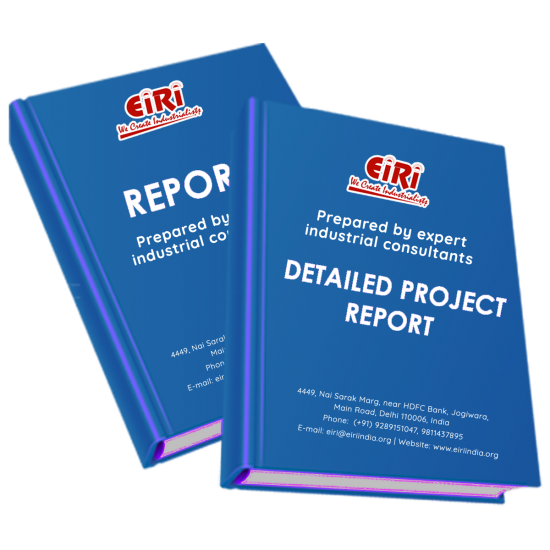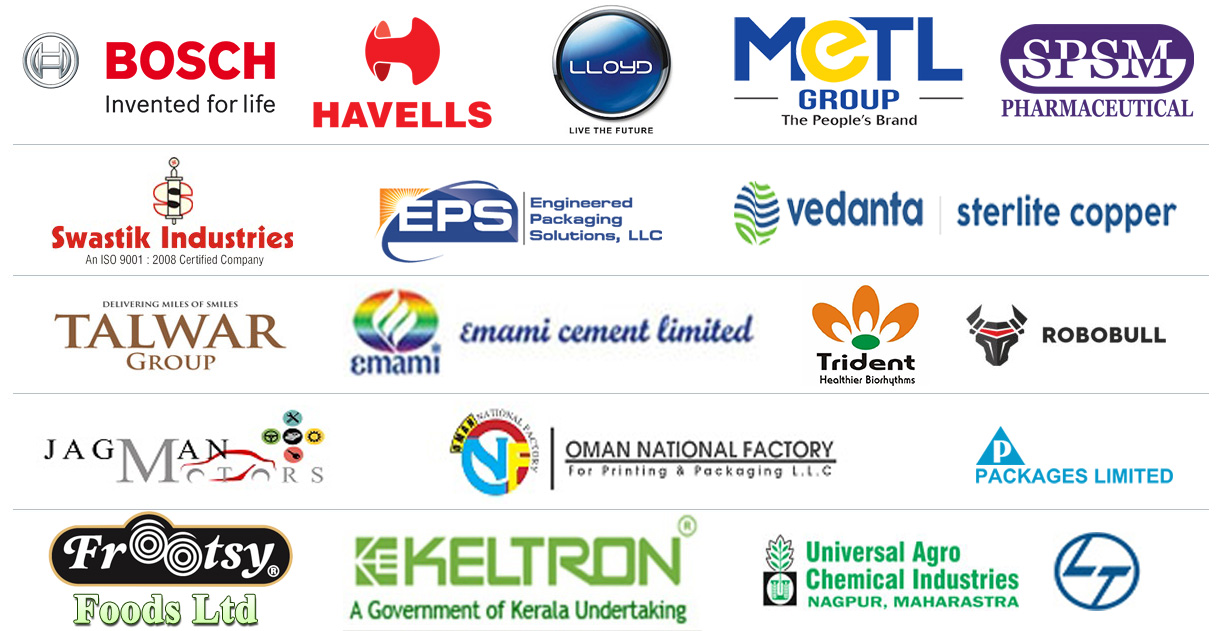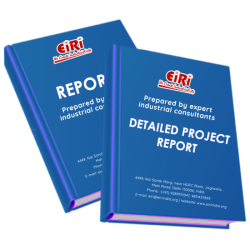Detailed Project Report on pavers block and bricks manufacturing plant

- More than 40 years of experience
- Managed by expert industrial consultants
- ISO 9001-2015 Certified
- Registered under MSME, UAM No: DL01E0012000
- 24/5 Research Support
Get your quesries resolved from an industry expert. Ask your queries before report or book purchase. - Custom Research Service
Speak to the our consultant to design an exclusive study to serve your research needs. - Quality Assurance
All reports are prepared by highly qualified consultants & verified by a panel of experts. - Information Security
Your personal & confidential information is safe & secure.
PAVERS BLOCK AND BRICKS MANUFACTURING PLANT
[CODE NO.4301]
Interlocking Concrete Block Pavement (ICBP) has been extensively used in a number of countries for quite some time as a specialized problem-solving technique for providing pavement in areas where conventional types of construction are less durable due to many operational and environmental constraints. ICBP technology has been introduced in India in construction, a decade ago, for specific requirement viz. footpaths, parking areas etc. but now being adopted extensively in different uses where the conventional construction of pavement using hot bituminous mix or cement concrete technology is not feasible or desirable. The paper dwells upon material, construction and laying of concrete block pavement as a new approach in construction of pavement using Interlocking Concrete Paver Blocks.
Concrete paver blocks were first introduced in Holland in the fifties as replacement of paver bricks which had become scarce due to the post-war building construction boom. These blocks were rectangular in shape and had more or less the same size as the bricks. During the past five decades, the block shape has steadily evolved from non-interlocking to partially interlocking to fully interlocking to multiply interlocking shapes. Consequently, the pavements in which non-interlocking blocks are used are designated as Concrete Block Pavement (CBP) or non-interlocking CBP, and those in which partially, fully or multiply interlocking blocks are used are designated as 'Interlocking Concrete Block Pavement (ICBP).
CBP/ICBP consists of a surface layer of small-element, solid un-reinforced pre-cast concrete paver blocks laid on a thin, compacted bedding material which is constructed over a properly profiled base course and is bounded by edge restraints/kerb stones. The block joints are filled using suitable fine material. A properly designed and constructed CBP/ICBP gives excellent performance when applied at locations where conventional systems have lower service life due to a number of geological, traffic, environmental and operational constraints [1-8]. Many number of such applications for light, medium, heavy and very heavy traffic conditions are currently in practice around the world.
Advantages and Limitations
There are many distinct features of ICBP as compared to the conventional methods of pavement construction and hence make it a suitable option for application in the specified areas [7 & 10]. Some of these are:
• Mass production under factory conditions ensures availability of blocks having consistent quality and high dimensional accuracy.
• Good quality of blocks ensures durability of pavements, when constructed to specifications.
• ICBP tolerates higher deflections without structural failure and will not be affected by thermal expansion or contraction.
• ICBP does not require curing, and so can be opened for traffic immediately after construction.
• Construction of ICBP is labor intensive and requires less sophisticated equipment.
• The system provides ready access to underground utilities without damage to pavement.
• Maintenance of ICBP is easy and simple and it is not affected by fuel and oil spillage.
• Use of coloured blocks facilitates permanent traffic markings.
• ICBP is resistant to punching loads and horizontal shear forces caused by maneuvering of heavy vehicles
• Low maintenance cost and a high salvage value ensures low life cycle cost.
However, important limitations of the technique are the following:
• Quality control of blocks at the factory premises is a prerequisite for durable "ICBP"
• Any deviations of base course profile will be reflected on the "ICBP" surface. Hence extra care needs to be taken to fix the same.
• High quality and gradation of coarse bedding sand and joint filling material are essential for good performance.
• "ICBP" over unbound granular base course is susceptible to the adverse effects of poor drainage and will deteriorate faster. "ICBP" is not suited for high speed roads (speed above 60 km/h)
Physical Requirements
Since zero slump concrete is used in production of paver blocks, the quality of blocks produced will depend upon various parameters like the capacity of compaction and vibration of machine, grade of cement used, water content, quality of aggregates used, their gradation and mix design adopted, additives used, handling equipment employed, curing method adopted, level of supervision, workmanship and quality control achieved, etc. Recommended grades of paver blocks to be used for construction of pavements having different traffic categories are given in Table 1.
Application of ICBP Technology
Some of the proven areas where ICBP technology is being applied are listed below:
Non-traffic Areas: Building Premises, Footpaths, Malls, Pedestrian Plaza, Landscapes, Monuments Premises, Premises, Public Gardens/Parks, Shopping Complexes, Bus Terminus Parking areas and Railway Platform, etc.
Light Traffic: Car Parks, Office Driveway, Housing Colony Roads, Office/Commercial Complexes, Rural Roads, Residential Colony Roads, Farm Houses, etc.
Medium Traffic: Boulevard, City Streets, Small Market Roads, Intersections/Rotaries on Low Volume Roads, Utility Cuts on Arteries, Service Stations, etc.
Heavy and Very Heavy Traffic: Container/Bus Terminals, Ports/Dock Yards, Mining Areas, Roads in Industrial Complexes, Heavy-Duty Roads on Expansive Soils, Bulk Cargo Handling Areas, Factory Floors and Pavements, Airport Pavement, etc.
Shapes and Classifications
There are four generic shapes of paver blocks corresponding to the four types of blocks as below:
Type A: Paver blocks with plain vertical faces, which do not key into each other when paved in any pattern,
Type B: Paver blocks with alternating plain and curved/corrugated vertical faces, which key into each other along the curve/corrugated faces, when paved in any pattern,
Type C: Paver blocks having all faces curved or corrugated, which key into each other along all the vertical faces when paved in any pattern and
Type D: 'L' and 'X' shaped paver blocks which have all faces curved or corrugated and which key into each other along all the vertical faces when paved in any pattern.
The generic shapes and groups of paver blocks identified to four types are illustrated in Figures 1 & 2.
Materials
The quality of materials, cement concrete strength, durability and dimensional tolerance of paving blocks, etc. is of great importance for the satisfactory performance of block pavements. These aspects and the block manufacturing process itself, which immensely affect the quality of paving blocks, have been outlined in the Indian Roads Congress Special Publications. The Central Road Research Institute (CRRI) has prepared the specifications for ICBP.
Paving Blocks
The quality of materials, strength of cement concrete and durability as well as dimensional tolerances etc. are of great importance for satisfactory performance of block pavement. The recommended thickness of block and grades of concrete for various applications and specification for paving in which materials used for preparation of blocks, physical requirements, physical test methods, sampling and acceptance criteria has already been formulated in BIS Code.
COST ESTIMATION
Plant Capacity 14,000 Nos/Day
Land & Building (4000 sq.mt.) Rs. 15 Lac
Plant & Machinery Rs. 46 Lac
Working Capital for 1 Month Rs. 24 Lac
Total Capital Investment Rs. 92 Lac
Rate of Return 45%
Break Even Point 64%
- INTRODUCTION
- ADVANTAGES AND LIMITATIONS
- HOWEVER, IMPORTANT LIMITATIONS OF THE TECHNIQUE ARE THE FOLLOWING:
- PHYSICAL REQUIREMENTS
- APPLICATION OF ICBP TECHNOLOGY
- SHAPES AND CLASSIFICATIONS
- MATERIALS
- \PAVING BLOCKS
- BEDDING AND JOINT FILLING SAND
- BASE AND SUB BASE MATERIALS
- CONSTRUCTION OF INTERLOCKING CONCRETE BLOCK PAVEMENT
- SEQUENCING OF OPERATIONS
- PAVEMENT TYPES
- PAVER PROPERTIES
- PAVER DIMENSIONS
- PAVING STRENGTH
- MINIMUM BREAKING LOAD
- COMPRESSIVE STRENGTH OF PAVERS
- DURABILITY
- SLIP RESISTANCE
- ABRASION RESISTANCE
- MOISTURE EXPANSION
- EFFLORESCENCE
- PITTING DUE TO LIME
- COLD WATER ABSORPTION
- ADVANTAGES AND LIMITATION OF PAVERS BLOCKS
- THE MORTAR USED IN PRODUCING PAVING BLOCKS
- SHAPES AND APPLICATION OF PAVERS BLOCKS
- APPLICATIONS OF CONCRETE PAVING BLOCKS
- 1. NON-TRAFFIC AREAS:
- 2. LIGHT TRAFFIC AREAS:
- 3. MEDIUM TRAFFIC AREAS:
- 4. HEAVY TRAFFIC AREAS:
- RAW MATERIALS FOR CONCRETE PAVER
- DETAILS AND COMPARISON OF PAVER BLOCKS
- PAVER BLOCKS
- COMPARISON OF PAVERS TO IPS
- B.I.S. SPECIFICATION
- SPECIFICATION OF PRECAST CONCRETE BLOCKS FOR PAVING
- 1 SCOPE
- 2 REFERENCES
- 3 TERMINOLOGY
- FIG. 1 EXAMPLES OF ARRIS (BEVELLED, ROUNDED, CHAMFERED) CHASED SIDE FACE AND DRAW
- 4 MATERIALS
- 5 GRADE DESIGNATIONS OF PAVER BLOCKS AND DESIGN OF CONCRETE BLOCK PAVEMENT
- TABLE 1: RECOMMENDED GRADES OF PAVER BLOCKS FOR DIFFERENTTRAFFIC CATEGORIES (CLAUSES 5 AND 9.1.4)
- 6 PHYSICAL REQUIREMENTS
- TABLE 2: RECOMMENDED DIMENSIONS AND TOLERANCE FOR PAVER BLOCKS (CLAUSES 6.2.2.1, 6.2.2.2, 6.2.3 AND 9.1.2)
- TABLE 3: COMPRESSIVE STRENGTH REQUIREMENTS OF CONCRETE PAVER BLOCKS (CLAUSES 6.2.5.2 AND 9.L.4)
- 7 TEST METHODS
- 8 SAMPLING
- TABLE 4: SAMPLING REQUIREMENTS (CLAUSE 8.5)
- 9 ACCEPTANCE CRITERIA
- 10 MARKING
- OVERVIEW OF CONSTRUCTION INDUSTRY IN INDIA
- 1. HIGH BUDGETARY ALLOCATION FOR INFRASTRUCTURE
- 2. INCREASING PRIVATE SECTOR INVOLVEMENT
- 3. IMPROVEMENT IN LOGISTICS
- 4. RISING FOREIGN DIRECT INVESTMENT (FDI) IN THE SECTOR
- ADVANTAGE INDIA
- 1. ROBUST DEMAND
- 2. ATTRACTIVE OPPORTUNITIES
- 3. POLICY SUPPORT
- 4. INCREASING INVESTMENT
- PERFORMANCE OF EIGHT CORE INFRASTRUCTURE INDUSTRIES
- GROWTH IN INFRASTRUCTURE RELATED ACTIVITIES
- STRONG MOMENTUM IN EXPANSION OF ROADWAYS
- STRONG REVENUE GROWTH FOR INDIAN RAILWAYS
- POWER GENERATION CAPACITY HAS INCREASED AT A HEALTHY PACE
- THE NATIONAL INFRASTRUCTURE PIPELINE (NIP)
- GOVERNMENT INITIATIVES
- CONCLUSION
- MARKET OVERVIEW OF PAVER BLOCKS
- PRODUCT MARKETING
- SECTOR & INDUSTRY ANALYSIS
- SECTOR CHARACTERISTICS AND OVERVIEW
- UNORGANIZED SECTOR – MACHINE BLOCKS
- UNORGANIZED SECTOR – HAND MADE BLOCKS
- ENVIIRONMENTAL & PROTECTION ASPECTS
- MARKET INFORMATION
- MARKET POTENTIAL
- EXPORTS AND IMPORTS OF PREFAB CONSTRUCTION BLOCKS
- TECHNICAL DETAILS FOR PAVERS BLOCKS
- DESIGN MIX CONCRETE:
- PAVER BLOCK MAKING MACHINE:
- WEIGH BATCHING & MIXING EQUIPMENT:
- CURING:
- LABORATORY
- RAW MATERIALS
- CEMENT
- AGGREGATES
- WATER
- OTHER MATERIALS
- PAVERS BLOCK CHARACTERISTICS
- PAVER BLOCK DIMENSIONS
- TESTING OF PAVER BLOCKS
- FOR 80MM PAVER TILES
- FOR 60MM GRASS PAVER TILES
- LAYING OF PAVER BLOCKS
- PRIMING
- BEDDING SAND COURSE
- LAYING OF INTERLOCKING PAVER BLOCK:
- INITIAL COMPACTION
- JOINT FILLING AND FINAL COMPACTION
- EDGE RESTRAINT USING KERB BLOCK
- UNIFORM INTERLOCKING SPACES
- SKILLED LABOUR
- LAYING PATTERN:
- TECHNICAL SPECIFICATION AND GRADE OF PAVER BLOCKS
- TECHNICAL SPECIFICATIONS OF PAVERS
- PRODUCT-WISH WEIGHTS AND DIMENSIONS
- PRODUCT DIMENSIONS AND WEIGHT
- RECOMMENDED GRADES OF PAVERS BLOCKS FOR DIFFERENTTRAFFIC CATEGORIES AS IS 15658-2006
- COMPRESSIVE STRENGTH REQUIREMENTS OF CONCRETE PAVER BLOCKS
- CORRECTION FACTORS FOR THICKNESS AND ARRIS/CHAMFER OF PAVER BOCK FOR CALCULATION OF COMPRESSIVE STRENGTH
- DESIGN OF PAVNG BLOCK
- DESCRIPTION OF LAYERS AND BASIC ENGINEERING DESIGN REQUIREMENTS
- SUBGRADE
- BASE COURSE
- TYPICAL GRADING FOR BASE COURSE MATERIALS
- BEDDING COURSE
- TYPICAL GRADING FOR BEDDING COURSE MATERIALS
- SURFACE COURSE
- RECOMMENDED SPECIFICATIONS FOR CLAY PAVERS
- EDGE RESTRAINTS
- DRAINAGE
- PAVER LAYING PATTERNS
- JOINTS BETWEEN PAVERS
- TYPICAL GRADING FOR JOINTING SANDS
- TOLERANCE ON COURSE LEVELS
- CROSSFALLS
- STEEP GRADIENTS
- MANUFACTURING PROCESS OF PAVERS BLOCKS
- WET CAST TECHNIQUE
- HYDRAULICALLY PRESSED TECHNIQUE
- RAW MATERIAL REQUIRED FOR THE MAKING OF PAVER BLOCKS
- MANUFACTURING PROCESS OF CONCRETE PAVERS
- WET CAST TECHNIQUE
- HYDRAULICALLY PRESSED TECHNIQUE
- PROCESSING DETAILS OF PAVERS BLOCKS
- MANUFACTURING PROCESS OF FLY ASH BRICKS
- TECHNICAL SPECIFICATION:-
- 1. COMPRESSIVE STRENGTH
- 2. DRYING SHRINKAGE
- 3. WATER ABSORPTION
- 4. EFFLORESCENCE TEST
- FORMULATION OF PAVERS BLOCKS
- QUALITY CONTROL AND STANDARDS
- A) INDIAN STANDARD SPECIFICATION
- B) QUALITY REQUIREMENTS
- PROS AND CONS OF WET CAST AND HYDRAULIC PRESS TECHNIQUES
- WET CAST PRODUCTION
- IMAGE COURTESY OF ARMCON LTD.
- OTHER WET CAST LANDSCAPE PRODUCTS
- MULTI-TONED TRAVERTINE EFFECT FLAG FROM BRADSTONE
- WET-CAST CHANCERY WALLING FROM MARSHALLS
- WET-CAST SLEEPER-EFFECT PAVING FROM ATLAS/BRETT
- HYDRAULIC PRESS PRODUCTION
- PIMPLE TEXTURE
- SIMPLIFIED MANUFACTURING PROCESS
- CURING AND PACKING
- REKERS CONCRETE BLOCK MACHINE
- PRESS AND MOULD FROM CHANDLA INDUSTRIES
- HOMOGENOUS AND FACE MIX PRODUCTS:
- TYPICAL "THROUGH-COLOUR "BRITISH BLOCK
- FACE-MIX BLOCK
- PAVING TEXTURES
- BARFACE PAVING IN RED
- DIAMOND PATTERN CLAY PAVERS
- HOBNAIL PAVING
- RIVEN SANDSTONE FLAGS - INDIAN IMPORTS
- RIVEN-EFFECT CONCRETE FLAGS FROM WESTMINSTER STONE
- RIVEN-EFFECT CLAY PAVERS FROM BAGGERIDGE
- NATURAL TEXTURES:
- SAWN YORKSTONE FLAGS
- HEAVILY RIVEN STONE FLAGS
- CROPPED GRANITE SETTS
- STANDARD TEXTURES:
- CONCRETE
- CHAMFERED EDGE AND SPACER LUGS MOULD-FORMED ON SMALL ELEMENT PAVER
- VARIOUS SHAPES AND DECORATIVE SURFACE TEXTURE ON MOULDED CONCRETE BLOCK
- BULL-NOSE AND HALF-BATTERED PROFILE TO MOULDED CONCRETE ROAD KERB
- CLAY:
- HANDMADE CLAY PAVERS
- MOULDED STAR-PATTERN CLAY PAVERS
- WIRECUT MIXED-SIZE CLAY PAVERS
- SECONDARY PROCESSES:
- TUMBLED-TYPE PAVERS
- HEAVILY TEXTURED PAVERS
- SECONDARY PROCESSES:
- TUMBLING
- TYPICAL TUMBLED CONCRETE PAVER
- LAID IN COURSES, THE EFFECT IS A 'TRADITIONAL' LOOK
- NEWLY-LAID DIRTY TUMBLED PAVERS
- SHOT BLASTING:
- SHOT-TEXTURED FLAG (MARSHALLS' SAXON)
- SHOT-TEXTURED KERB (MARSHALLS' CONSERVATION)
- SHOT-TEXTURED FLAGS IN 3 COLOURS
- SHOT-TEXTURED BLOCK PAVER
- DISTRESSED MEDITERRANEAN RUSTIC PAVERS FROM STONE & STYLE
- TUMBLED CHINESE GRANITE ON MESH BACKING
- TUMBLED RED GRANITE SETTS
- TUMBLED YORKSTONE SETTS
- BUSH HAMMERING:
- BUSH-HAMMERED GRANITE
- BUSH-HAMMERED CONCRETE
- BUSH-HAMMERED DECO FLAG
- BUSH-HAMMERED "CORNISH" BLOCK PAVERS FROM FORMPAVE
- BUSH-HAMMERED CONCRETE PAVERS LAID TO FOOTPATH
- POLISHING:
- MILANO GROUND/POLISHED PAVING FROM ACHESON-GLOVER
- VERONA GROUND/POLISHED PAVING
- "PERFECTA" HEXAGONAL GROUND PAVING FROM MARSHALLS
- POLISHED GRANITE FLAGS 450X450MM
- POLISHED GRANITE BLOCKS 200X100MM
- WASH-TO-EXPOSE:
- SPECIFICATIONS FOR ORDINARY CONCRETE
- FINE AGGREGATES
- COARSE AGGREGATES
- PRESCRIBED MIXES FOR ORDINARY STRUCTURAL CONCRETE
- FREE WATER: CEMENT RATIO
- PROCESS FLOW DIAGRAM
- PROCESS OUTLINE OF PAVERS BLOCK (MANUAL PROCESS)
- PRINCIPLES OF PLANT LAYOUT
- MAJOR PROVISIONS IN ROAD PLANNING FOR MULTIPURPOSE SERVICE ARE:
- PLANT LOCATION FACTORS
- PRIMARY FACTORS
- 1. RAW-MATERIAL SUPPLY:
- 2. MARKETS:
- 3. POWER AND FUEL SUPPLY:
- 4. WATER SUPPLY:
- 5. CLIMATE:
- SPECIFIC FACTORS
- 6. TRANSPORTATION:
- A. AVAILABILITY OF VARIOUS SERVICES AND PROJECTED RATES
- 7. WASTE DISPOSAL:
- 8. LABOR:
- 9. REGULATORY LAWS:
- 10. TAXES:
- 11. SITE CHARACTERISTICS:
- 12. COMMUNITY FACTORS:
- 13. VULNERABILITY TO WARTIME ATTACK:
- 14. FLOOD AND FIRE CONTROL:
- EXPLANATION OF TERMS USED IN THE PROJECT REPORT
- 1. DEPRECIATION:
- 2. FIXED ASSETS:
- 3. WORKING CAPITAL:
- 4. BREAK-EVEN POINT:
- 5. OTHER FIXED EXPENSES:
- 6. MARGIN MONEY:
- 7. TOTAL LOAD:
- 8. LAND AREA/MAN POWER RATIO:
- PROJECT IMPLEMENTATION SCHEDULES
- INTRODUCTION
- PROJECT HANDLING
- PROJECT SCHEDULING
- PROJECT CONSTRUCTION SCHEDULE
- TIME SCHEDULE
- SUPPLIERS OF PAVING BLOCK
- SUPPLIERS OF PORTLAND CEMENT
- SUPPLIERS OF STONE CHIPS
- SUPPLIERS OF DG SETS
- SUPPLIERS OF WATER PUMP
- SUPPLIERS OF PALLETS
- SUPPLIERS OF MOULDS
- PLANT AND MACHINERY SUPPLIERS FOR PAVERS BLOCKS
- CHINA SUPPLIER OF AUTOMATIC PAVING BLOCK MAKING MACHINE
- PROJECT SYNOPSIS
APPENDIX – A:
01. PLANT ECONOMICS
02. LAND & BUILDING
03. PLANT AND MACHINERY
04. OTHER FIXED ASSESTS
05. FIXED CAPITAL
06. RAW MATERIAL
07. SALARY AND WAGES
08. UTILITIES AND OVERHEADS
09. TOTAL WORKING CAPITAL
10. TOTAL CAPITAL INVESTMENT
11. COST OF PRODUCTION
12. TURN OVER/ANNUM
13. BREAK EVEN POINT
14. RESOURCES FOR FINANCE
15. INSTALMENT PAYABLE IN 5 YEARS
16. DEPRECIATION CHART FOR 5 YEARS
17. PROFIT ANALYSIS FOR 5 YEARS
18. PROJECTED BALANCE SHEET FOR (5 YEARS)
How to Make Project Report?
Detailed Project Report (DPR) includes Present Market Position and Expected Future Demand, Technology, Manufacturing Process, Investment Opportunity, Plant Economics and Project Financials. comprehensive analysis from industry covering detailed reporting and evaluates the position of the industry by providing insights to the SWOT analysis of the industry.
Each report include Plant Capacity, requirement of Land & Building, Plant & Machinery, Flow Sheet Diagram, Raw Materials detail with suppliers list, Total Capital Investment along with detailed calculation on Rate of Return, Break-Even Analysis and Profitability Analysis. The report also provides a birds eye view of the global industry with details on projected market size and then progresses to evaluate the industry in detail.
We can prepare detailed project report on any industry as per your requirement.
We can also modify the project capacity and project cost as per your requirement. If you are planning to start a business, contact us today.
Detailed Project Report (DPR) gives you access to decisive data such as:
- Market growth drivers
- Factors limiting market growth
- Current market trends
- Market structure
- Key highlights
Overview of key market forces propelling and restraining market growth:
- Up-to-date analyses of market trends and technological improvements
- Pin-point analyses of market competition dynamics to offer you a competitive edge major competitors
- An array of graphics, BEP analysis of major industry segments
- Detailed analyses of industry trends
- A well-defined technological growth with an impact-analysis
- A clear understanding of the competitive landscape and key product segments
Need Customized Project Report?
- Ask for FREE project related details with our consultant/industry expert.
- Share your specific research requirements for customized project report.
- Request for due diligence and consumer centric studies.
- Still haven't found what you're looking for? Speak to our Custom Research Team
About Engineers India Research Institute:
Note: We can also prepare project report on any subject based on your requirement and country. If you need, we can modify the project capacity and project cost based on your requirement.
Our Clients

Our Approach
- Our research reports comprehensively cover Indian markets (can be modified as per your country), present investigation, standpoint and gauge for a time of five years*.
- The market conjectures are produced on the premise of optional research and are cross-accepted through associations with the business players
- We use dependable wellsprings of data and databases. What's more, data from such sources is handled by us and incorporated into the report
Why buy EIRI reports?
- Our project reports include detailed analysis that help to get industry Present Market Position and Expected Future Demand.
- Offer real analysis driving variables for the business and most recent business sector patterns in the business
- This report comprehends the present status of the business by clarifying a complete SWOT examination and investigation of the interest supply circumstance
- Report gives investigation and top to bottom money related correlation of real players/competitors
- The report gives gauges of key parameters which foresees the business execution























